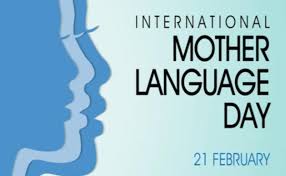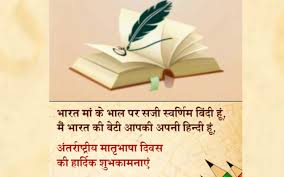International Mother Language Day :
Languages are more than just a means of communication; they are a vital part of cultural identity, heritage, and history. Every language carries the essence of a community’s traditions, beliefs, and expressions. Recognizing the importance of linguistic diversity, International Mother Language Day is observed annually on February 21 to promote the preservation and protection of languages worldwide. Established by UNESCO in 1999, this day commemorates the struggle of Bangladeshi students who sacrificed their lives to protect their mother tongue, Bengali, in 1952.
The Origin and History of International Mother Language Day :

The roots of International Mother Language Day trace back to the historical Language Movement in Bangladesh (then East Pakistan). In 1948, the government of Pakistan declared Urdu as the only national language, disregarding the fact that the majority of people in East Pakistan spoke Bengali. This decision led to protests, and on February 21, 1952, students in Dhaka organized demonstrations demanding the recognition of Bengali as an official language. Tragically, several students lost their lives when police opened fire on the protestors. Their sacrifice led to the eventual recognition of Bengali as one of Pakistan’s official languages in 1956 and later became the national language of independent Bangladesh in 1971.
To honor the sacrifices made during this movement, Bangladesh proposed the idea of International Mother Language Day to UNESCO, and it was officially proclaimed in 1999. Since 2000, the day has been observed globally to promote multilingualism and linguistic rights.
The Importance of International Mother Language Day :
1. Preserving Linguistic Diversity :
Language is the foundation of communication, and with over 7,000 languages spoken worldwide, linguistic diversity is a crucial aspect of human civilization. However, many indigenous languages are endangered, with one language disappearing every two weeks. International Mother Language Day aims to raise awareness about these vulnerable languages and the need to preserve them for future generations.
2. Cultural Identity and Heritage
A language is not just a set of words but a reflection of a community’s customs, values, and traditions. When a language becomes extinct, a part of cultural heritage is lost forever. By promoting the use and learning of native languages, this day helps communities retain their unique cultural identities.
3. Education and Cognitive Benefits
Studies have shown that bilingual and multilingual individuals have cognitive advantages, including improved problem-solving skills, better memory, and enhanced creativity. International Mother Language Day encourages multilingual education, helping students learn in their native languages while also acquiring additional languages.
4. Promoting Peace and Inclusivity
Language plays a crucial role in fostering understanding and cooperation among different communities. Recognizing linguistic diversity promotes respect, peace, and social cohesion. By celebrating International Mother Language Day, societies can build inclusive environments where all languages and cultures are valued.
How is International Mother Language Day Celebrated?
International Mother Language Day is observed in various ways across the globe. Schools, universities, cultural organizations, and governments organize events to highlight the significance of linguistic diversity. Some common activities include:
- Language Awareness Campaigns: Educational institutions conduct seminars, workshops, and discussions to promote the importance of preserving native languages.
- Cultural Programs: Music, poetry, and storytelling sessions are held in different languages to celebrate linguistic heritage.
- Translation Projects: Many initiatives focus on translating important texts into indigenous languages to increase accessibility and inclusivity.
- Art and Literature Exhibitions: Books, manuscripts, and artworks showcasing different languages are displayed to emphasize the richness of linguistic traditions.
- Social Media Campaigns: People use hashtags like #InternationalMotherLanguageDay to spread awareness and share content in their mother tongues.
- Government and UNESCO Initiatives: Policies and programs are implemented to support multilingual education and language preservation.
- The Role of UNESCO and the United Nations
Since its establishment, UNESCO has played a pivotal role in advocating for linguistic diversity and multilingual education. The organization encourages governments to implement policies that support language preservation and ensure that children receive education in their mother tongue. The United Nations Sustainable Development Goals (SDGs) also emphasize the need for quality education (SDG 4) and cultural diversity (SDG 16), aligning with the objectives of International Mother Language Day.
Challenges in Language Preservation
Despite efforts to promote linguistic diversity, several challenges threaten the survival of many languages:
- Globalization and Dominance of Major Languages: With the increasing dominance of languages like English, Mandarin, and Spanish, many smaller languages are losing speakers, leading to their gradual extinction.
- Lack of Government Support: Many governments prioritize national or official languages, leaving indigenous and minority languages without adequate support in education and administration.
- Digital Divide: The internet and digital platforms primarily cater to dominant languages, limiting access to resources in less-spoken languages.
- Urbanization and Migration: As people move to urban areas for economic opportunities, they often adopt dominant languages for communication, leading to the decline of native languages.
Ways to Preserve and Promote Mother Languages
While the challenges are significant, there are many ways to preserve and promote linguistic diversity:
- Encouraging Multilingual Education: Schools should incorporate mother tongue-based education systems to enhance learning outcomes and language preservation.
- Creating Digital Content: More content, including books, websites, and apps, should be developed in indigenous languages to increase accessibility.
- Supporting Community Initiatives: Governments and organizations should fund language documentation and revitalization programs.
- Promoting Language at Home: Families should speak their native language at home to pass it on to future generations.
- Recognition and Policy Implementation: Legal recognition and policies supporting linguistic rights can help sustain endangered languages.
Conclusion
International Mother Language Day serves as a powerful reminder of the significance of linguistic diversity in shaping cultural identity and fostering global harmony. By celebrating and protecting our native languages, we preserve the rich heritage of humanity. Each language carries the wisdom, traditions, and emotions of its speakers, making it essential to keep them alive for future generations. As we observe February 21, let us embrace the beauty of linguistic diversity and take proactive steps to safeguard our mother languages. Through collective efforts, we can create a world where every language is valued, respected, and preserved.
अंतर्राष्ट्रीय मातृभाषा दिवस: भाषा की विविधता का उत्सव

अंतर्राष्ट्रीय मातृभाषा दिवस हर साल 21 फरवरी को मनाया जाता है, जिसका उद्देश्य भाषाई विविधता को प्रोत्साहित करना और मातृभाषाओं के संरक्षण का समर्थन करना है। यह दिन यूनेस्को द्वारा 1999 में घोषित किया गया था और 2000 से विश्व स्तर पर मनाया जा रहा है। इसका ऐतिहासिक महत्व बांग्लादेश (पूर्वी पाकिस्तान) के भाषा आंदोलन से जुड़ा है, जब 1952 में छात्रों ने बंगाली भाषा को मान्यता दिलाने के लिए संघर्ष किया था और अपनी जान गंवाई थी।
इस दिवस का मुख्य उद्देश्य लुप्त होती भाषाओं को बचाना, बहुभाषावाद को बढ़ावा देना और भाषाई एवं सांस्कृतिक अधिकारों की रक्षा करना है। दुनिया में लगभग 7000 भाषाएँ बोली जाती हैं, लेकिन हर दो सप्ताह में एक भाषा विलुप्त हो जाती है। इस दिन के माध्यम से भाषाओं के महत्व पर जागरूकता बढ़ाई जाती है ताकि लोग अपनी मातृभाषा को अपनाएं और अगली पीढ़ी को सिखाएं।
अंतर्राष्ट्रीय मातृभाषा दिवस पर विभिन्न सांस्कृतिक कार्यक्रम, सेमिनार, भाषण, कविता पाठ और साहित्यिक आयोजनों का आयोजन किया जाता है। यह दिन हमें यह सिखाता है कि भाषा केवल संचार का साधन नहीं, बल्कि हमारी सांस्कृतिक विरासत और पहचान का प्रतीक भी है। आइए, हम सभी अपनी मातृभाषा का सम्मान करें और भाषाई विविधता को बनाए रखने में योगदान दें।
International Mother Language Day: Celebrating Linguistic Heritage
Introduction
Language is more than just a tool for communication—it is the foundation of culture, identity, and heritage. Every word we speak carries the essence of history, tradition, and collective memory. To honor this richness, International Mother Language Day is celebrated every year on 21st February across the globe. Declared by UNESCO in 1999 and formally recognized by the United Nations in 2002, the day highlights the importance of preserving and promoting mother tongues, which are gradually disappearing in many parts of the world.
Origin and Historical Significance
The roots of International Mother Language Day lie in Bangladesh’s struggle to preserve the Bengali language. On 21st February 1952, students in Dhaka protested against the imposition of Urdu as the only state language of Pakistan. Many of them sacrificed their lives during the demonstrations, which later became a turning point in linguistic rights movements worldwide. To honor this sacrifice, UNESCO chose 21st February as International Mother Language Day, emphasizing the role of languages in promoting cultural diversity and peace.
The Importance of Mother Languages
Mother language, often the first language learned by a child, is the most natural way of expressing emotions, thoughts, and ideas. It connects individuals with their roots and traditions. The importance of mother tongues can be highlighted through several aspects:
-
Cultural Identity – Languages preserve stories, traditions, songs, and values unique to each community. Losing a language often means losing cultural heritage.
-
Education and Learning – Children learn better in their mother tongue, as it allows them to grasp concepts easily and build a strong foundation before transitioning to other languages.
-
Social Unity – A shared language fosters community bonding and strengthens identity.
-
Global Diversity – Every language adds richness to human civilization, contributing to art, literature, science, and philosophy.
Linguistic Diversity and Its Challenges
There are over 7,000 languages spoken worldwide, but according to UNESCO, almost 40% of the global population does not have access to education in their mother tongue. Even more alarming, one language disappears every two weeks, leading to the loss of traditions, histories, and cultural knowledge tied to it.
Reasons for this decline include:
-
Globalization and dominance of widely spoken languages.
-
Lack of government support for minority languages.
-
Migration and urbanization leading to reduced use of native tongues.
-
Limited resources for promoting local literature and education.
International Mother Language Day aims to bring attention to these challenges and encourage efforts to preserve endangered languages.
How International Mother Language Day is Celebrated
Every year, UNESCO and various cultural organizations around the world organize events to promote multilingualism and cultural diversity. Some of the ways it is celebrated include:
-
Seminars and Workshops: Discussions on the importance of linguistic diversity.
-
Cultural Programs: Folk songs, poetry readings, and storytelling in local languages.
-
Educational Campaigns: Schools organize competitions, debates, and exhibitions to promote native languages.
-
Digital Platforms: Social media campaigns spread awareness with hashtags and multilingual content.
In Bangladesh, the day holds special emotional significance. People pay tribute at the Shaheed Minar memorial in Dhaka and across the country, honoring the martyrs of 1952.
International Mother Language Day Themes
Each year, UNESCO announces a theme for the day, focusing on different aspects of linguistic rights and education. Themes have included topics like “Fostering Multilingualism for Inclusion in Education and Society” and “Linguistic Diversity and Multilingualism: Pillars of Sustainable Development.” These themes emphasize that protecting languages is not only about preserving culture but also about ensuring inclusive growth and sustainable development.
The Role of Technology in Preserving Languages
In the digital age, technology plays a key role in safeguarding linguistic heritage. Mobile applications, online dictionaries, e-learning platforms, and AI-driven translation tools are helping revive and document endangered languages. For example, many tribal and regional languages now have digital archives, making them accessible to younger generations. Social media has also become a powerful tool to promote local dialects, folk stories, and traditional art forms.
Promoting Multilingualism in Daily Life
Celebrating International Mother Language Day goes beyond one day of remembrance—it is about practicing multilingualism in our daily lives. Some simple ways individuals can contribute are:
-
Encouraging children to learn and speak their mother tongue at home.
-
Supporting local literature, music, and films in regional languages.
-
Participating in cultural festivals that highlight linguistic diversity.
-
Learning basic words or greetings from other languages to build respect for diversity.

